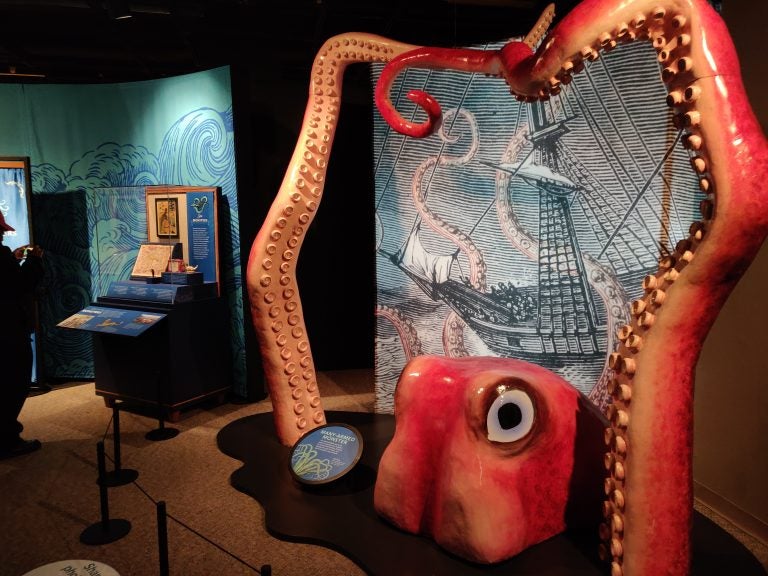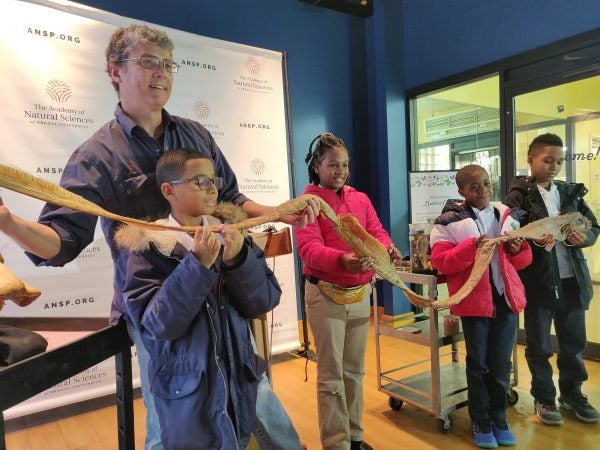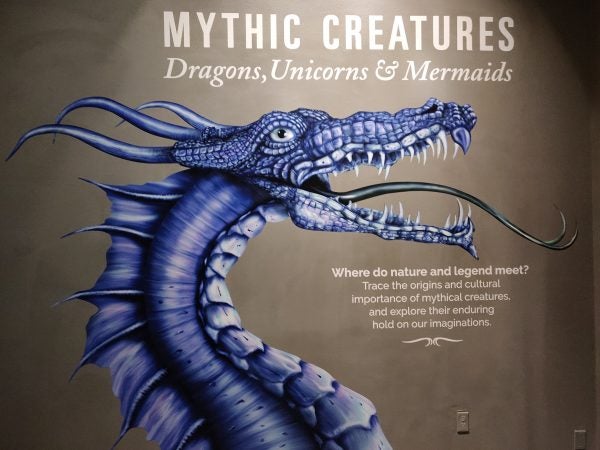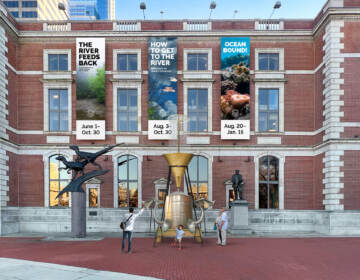New exhibit explores mythic creatures to understand human imagination
The new “Mythic Creatures” exhibit opens at The Academy of Natural Sciences of Drexel University Saturday.

The new “Mythic Creatures” exhibit opens at The Academy of Natural Sciences of Drexel University on Saturday (Xavier Lopez for WHYY)
Mermaids, unicorns, dragons and sea monsters are some of the most popular creatures in common lore.
But where did these creatures come from? How did we create these monsters and beasts?
The new “Mythic Creatures” exhibit opening at The Academy of Natural Sciences of Drexel University Saturday focuses on just those questions — how misinterpretations of animal skulls and fossils brought some of these creatures to life.
Early human explorers had a hard time understanding some of the exotic fossils and beasts that they were encountering in their travels, say museum curators. Whatever they couldn’t bring back home from their trips became the subject of stories, often embellished, of creatures that were beyond the scope of imagination.
“The misinterpretation of a real animal led to the fantastic and enduring myth of one of our favorite monsters, the Cyclops,” said Jennifer Sontchi, senior director of exhibits and public spaces at Academy of Natural Sciences. “Today’s scholars believe that, actually, what they found is an elephant skull.”
The elephant skull’s trunk cavity was mistaken for eye socket, leading to ancient explorers telling stories of a giant one-eyed monster. Misinterpretations like this one are many in the exhibit, which tries to connect these creatures and their real life animal counterparts.
While the exhibit is called mythical creatures, it may be more fitting to describe it as an insight into the human imagination — and the ways we come to terms with the unknown.
“A lot of these things were inspirational and tapped into their creativities in storytelling,” said Mark Sabaj, a museum curator at the academy. “And it’s these stories that engaged the people that didn’t have the chance to travel or explore.”
Running through early June, the exhibit will open with a weekend of festivities including squid dissections, “unicorn poop” soap slime stations, and an observation of manatee, octopus and crocodile specimens in order to compare them with their mythical counterparts — the mermaid, kraken and dragon.
WHYY is your source for fact-based, in-depth journalism and information. As a nonprofit organization, we rely on financial support from readers like you. Please give today.








